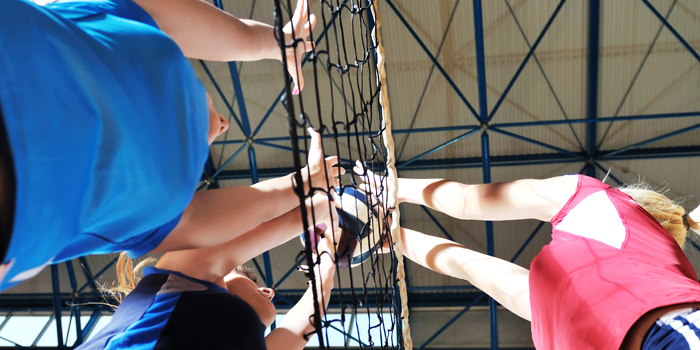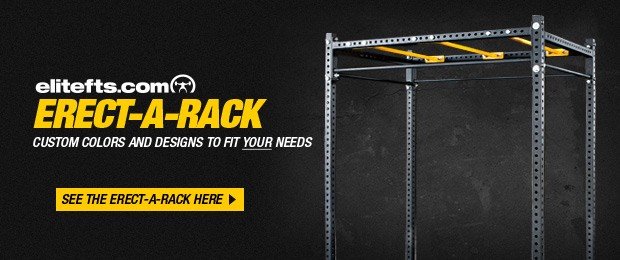
The elitefts Q&A provides a unique opportunity for individuals new to training for strength and conditioning—or even those with many years of experience—to interact directly with experts in their chosen field. Having trouble learning how to wrap your knees for your first powerlifting meet? There are team members to help you out. Struggling to set up an off-season training program for your high school football team? We have coaches for that. Struggling to gain ground with your diet and need a few tips to re-ignite progress? We can help you there, too.
Each month, hundreds of questions from elitefts readers are posted on the Q&A, with team members, friends of the team, and other readers responding to share experience and give advice. The elitefts team members who spend time on the Q&A not only have the necessary expertise to answer your questions but more importantly, they have the willingness. They truly embody living, learning, and passing on.
In this Q&A highlight, a reader by the name of Steven Q asks a question to long-term elitefts affiliate James Smith. Not only does Steven receive an answer directly from James, but he also hears from Mike Roberston and Nic Bronkall. The result is a comprehensive look at the high-level considerations of training volleyball players.
Steven Q: Hey, James. From your high/low manual, amongst other materials I've read that were written by you, I know you do not apply any overhead lifts for sports that do not require supporting a load overhead. I was wondering what lifts you use for volleyball players, as they do not really require much in the way of horizontal pressing either (i.e. in comparison to sports like football), and the load is very low during a swing. That being said, do you still apply horizontal movements such as benching or push-ups in order to strengthen the musculature to an appropriate level? Or do you stick with more dynamic effort movements such as throws and plyometric upper body lifts? I'm guessing the dynamic effort versus the max effort would also be much more pertinent in this case. It was great going back over the manual and I am trying to implement high/low practices much more purposefully now in regards to intensive CNS stressors.
Mike Robertson: I won't comment on everything here (and I'm not James!) but I think push-ups are an integral component of programming for an overhead athlete. Most of the time we do a bazillion sets of rotator cuff work when a push-up is a closed-chain exercise that lights up our stabilizing musculature.
When you factor in that it also ties the upper and lower body together via the core (and most volleyball players have long levers and need stability anyway), I think it's an exercise that all of them should be performing.
Just my two cents. Good luck!
Nic Bronkall: I'm not James Smith but we do train a lot of volleyball players at our facility. We use the Swiss Bar a lot for a neutral grip style pressing, as it takes the athlete out of that internally rotated position the normal bench press would place them in. We prefer to use more of an incline press instead of flat or overhead. We like to do a lot of medicine ball work with all athletes.
With that being said, we need to strengthen the shoulder in its external position along with the upper back. I know you asked about upper but on lower we use a SS Yoke Bar, as it reduces the stress on the athletes' shoulders and strengthens the upper back. With our overhead athletes like volleyball players, we want the athletes to effectively transfer forces from the lower body through the upper body, so we focus on anti-movement pattern for core training.
Some tips:
- Use a neutral grip.
- Strengthen the upper back.
- Strengthen the shoulders and upper back using external rotation movements.
- Incorporate proper prehabilitation and rehabilitation into warm-ups.
- Use an SS Yoke Bar.
- Use anti-movement exercises like palloff variations, one-arm dumbbell bench, dumbbell rack walks, and dumbbell/kettlebell suitcase carries.
James Smith: Mike and Nic have provided sound suggestions. The most important variable, however, is the optimal programming and organization of volleyball practice AND work done outside of practice.
The vast majority of injuries we see in the female volleyball population are the eventuality of entirely mismanaged and overloaded technical/tactical work placed upon an entirely insufficiently developed foundation of the physical condition. This is particularly true at the youth/high school/club stages.The athlete's physical condition is simply too underdeveloped to support the erroneous demands of the mismanaged technical/tactical workloads.
As for the non-technical/tactical physical conditioning aspect of the training load, as with all things, work backwards from the sport biodynamic/bioenergetic/biomotor structure, and by the time you get to the general end of the continuum it simply doesn't matter what is done as long as it is done well and supports the sport biodynamic/bioenergetic/biomotor demands. This includes the development of the soft tissues and movements that directly contribute to the execution of sport actions, as well as the soft tissues and movements that contribute structural balance to them.
It is time for you to blur the lines between volleyball practice and physical preparation and fuse them into one holistic entity of movement. In this way, on a high-intensity day, you will front load the day's activities with the most technically relevant and velocity-based actions and transition to activities with less technically relevant and more force-dominant efforts and finalize (if so desired) and backload with the least technically relevant, slowest, and lowest force based activities. Alternatively, on the low-intensity days that are adjacent to each high-intensity day, you may retain positional power speed work, relevant aerobic loading, and any other low velocity/force actions.
In this way, there is no more volleyball practice and no more physical preparation — simply movement preparation that is programmed and organized based upon force: velocity characteristics.
Steven: Thanks, James. So to give a rough outline, the two days would look something like this? I wouldn't necessarily do all of these every day, but wanted to get the correct order down.
High Day:
- Technical/Tactical Work
- Sprints
- Jumps
- Intensive Medicine Ball Throws
- Primary Lifts
- Supplemental Lifts
Low Day:
- Positional Speed/Power Work
- Aerobic Work
- Low Force/Low Velocity Lifts
Also, if I have the following books, is there an order you'd recommend or which one to start with, if it matters?
- "Science of Sports Training", Kurz
- "Programming and Organization of Training" and "Fundamentals of Special Strength-Training in Sport", Verkoshanky
- "Transfer of Training in Sports", Bondarchuk
- "Principles and Basics of Advanced Athletic Training" and "Block Training", Issurin
James Smith: Correct. Ensure, however, on the low day, that the positional power speed work is consistent with T&F power speed parameters and not high in intensity. As for the books, they are all valuable additions to any sport training library. I suggest that you work through them concurrently, in the same way a well-founded, multi-faceted curriculum is structured.
More about James:
Professional duties have included stations in 3 countries. Coaching or consulting roles have spanned the Olympic, International, Professional, University, High/Secondary School and private sector levels. Work positions have included: track and field coach/consultant, physical preparation coach/consultant, Program Director, and Senior National Physical Preparation Coach with Performance Director responsibility for the Portuguese Rugby Federation. Presentations on global sport concepts have been given in 5 different countries. Consulting duties have spanned work with coaches/athletes from the NFL, CFL, Collegiate American Football, United Kingdom Athletics, Jamaican Track and Field, US Collegiate Track and Field, US National Luge, Super 15 Rugby, Premiership Rugby, Rabo Direct Pro 12 Rugby, English Premier League Football, Croatian Water Polo, USA Volleyball, Mixed Martial Arts, and a variety of other Olympic sports disciplines. Military special operations, Paramilitary, and Law Enforcement clients have included: operators from USAF Para Rescue, US Navy SEAL Teams, US Navy Divers, Swedish Särskilda Skyddsgruppen, US Army Special Forces, Federal Air Marshals, Para Military Contractors, and Corrections Officers. Locate more information at www.globablsportconcepts.net.
Business contact:
athleteconsulting@gmail.com
Athleteconsulting.net










1 Comment